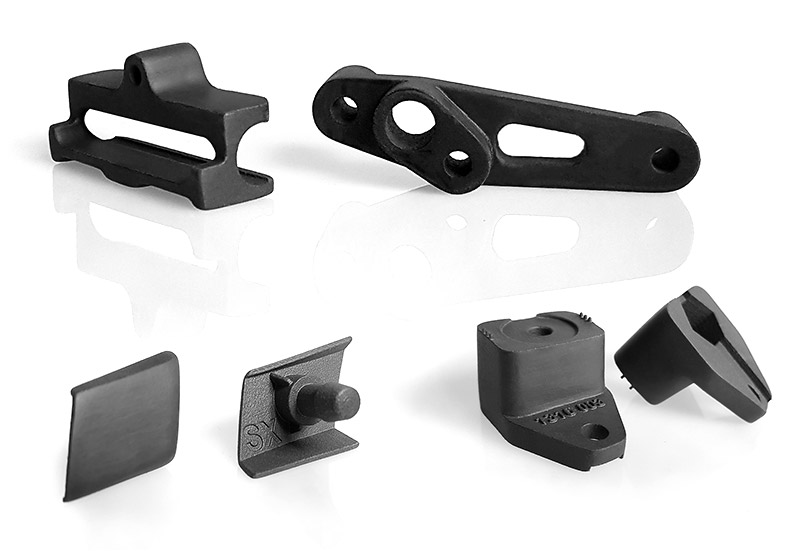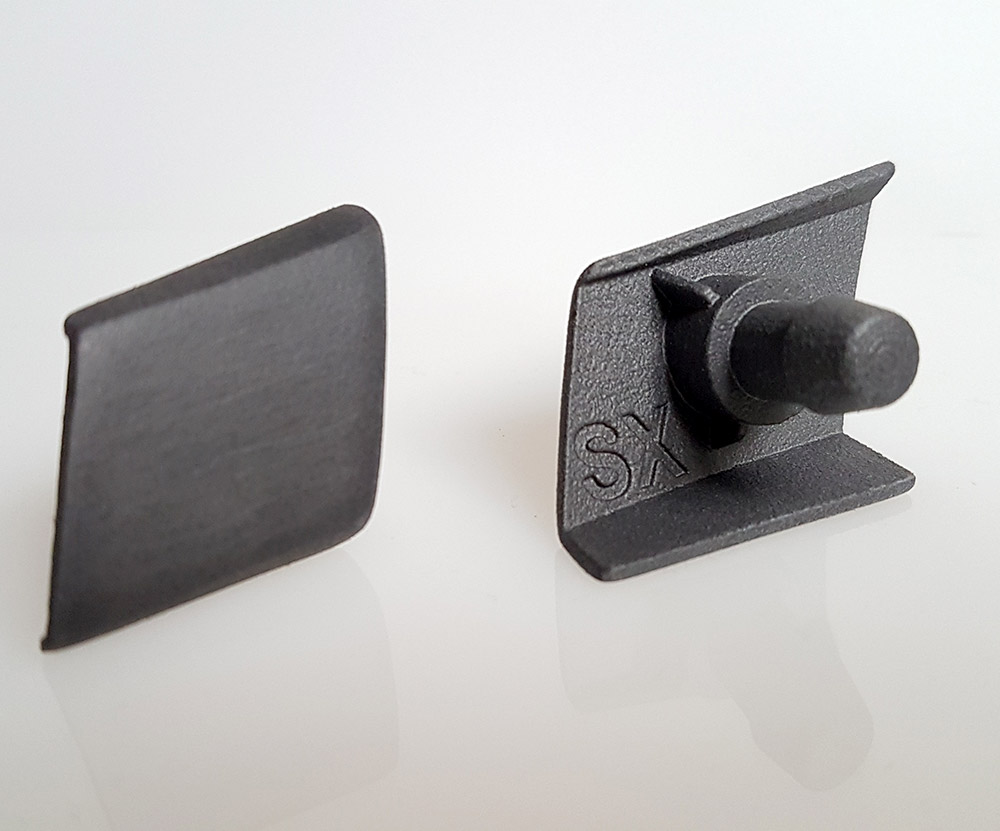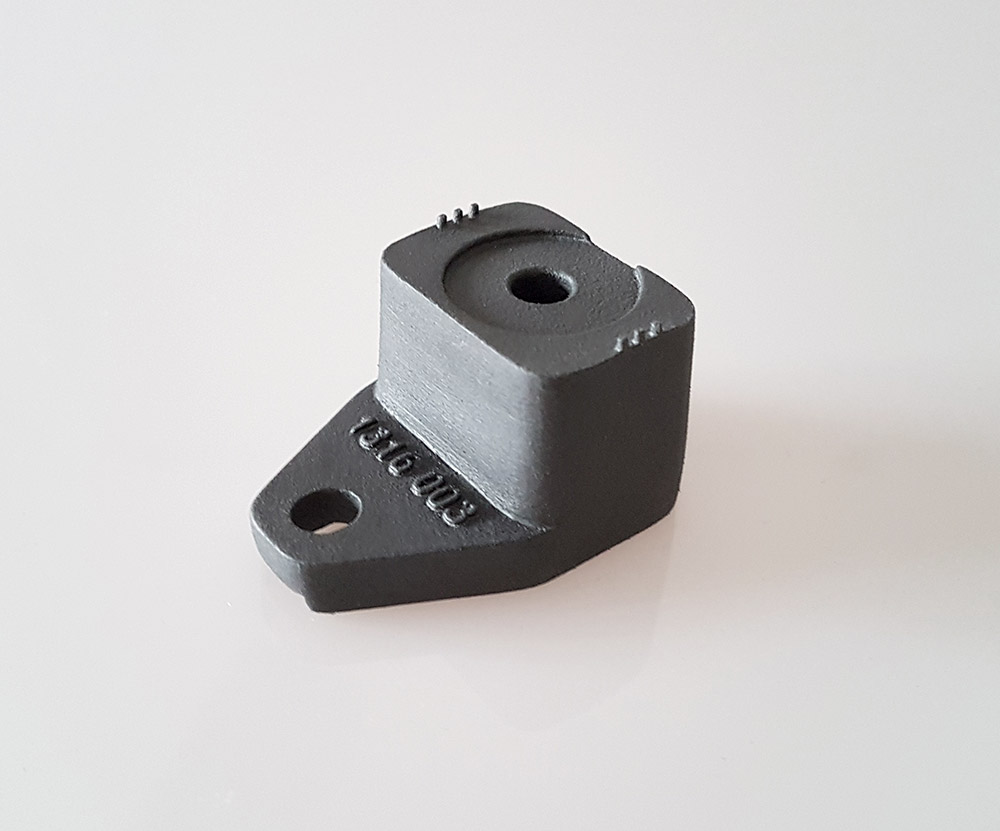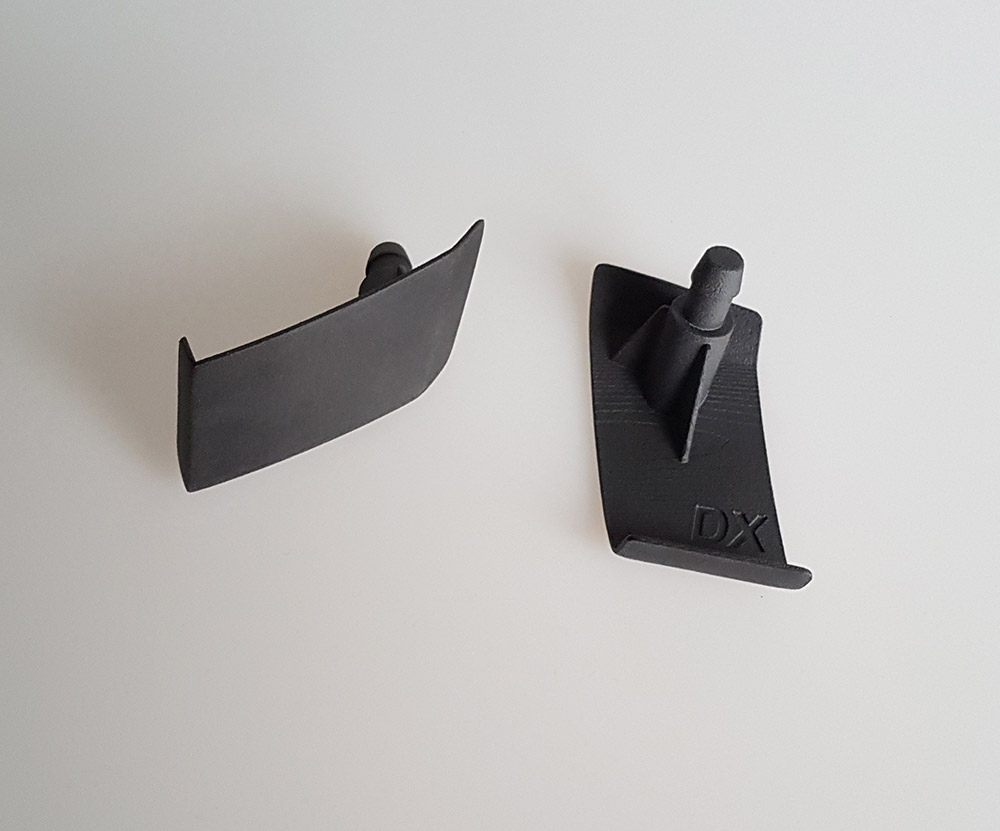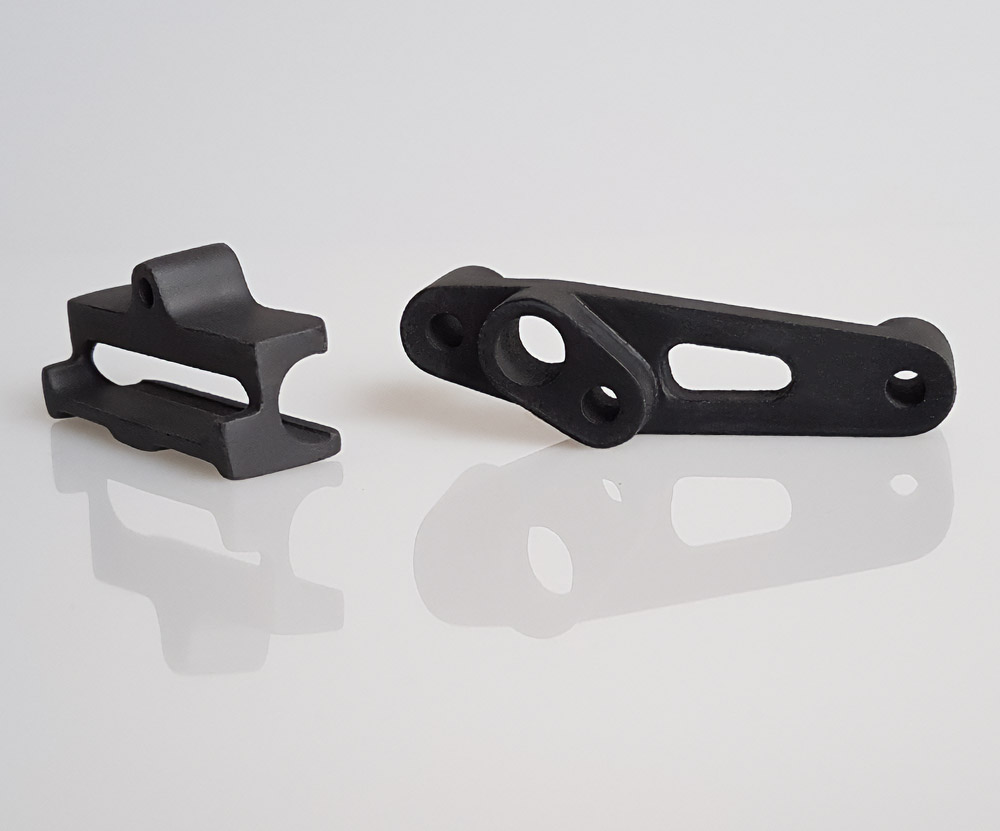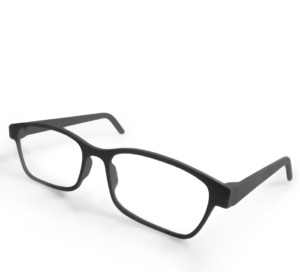Class of Material
Polyammide Material
Technology
High Speed Sintering (HSS)
FEATURES
Faster production higher volumes at lower costHigh FlexibilityInsulated material (CTI rating of 600)Isotropic material (X, Y, Z axis)
KEY VALUES
Density (20° C) 1,02 g/ccMelting point 182UTS (X axis) 48,72 MpaElongation @ break (X axis) 13,64 %Tensile Modulus (X axis) 1960,6 MpaFlexural Modulus 1734,2 MpaComparative Tracking Index 600
APPLICATIONS
Automotive: interior design, ventilation flapsConsumer and household goodsElectronics: connectors, enclosures and housingIndustrial products: interior fittings, furniture parts, mock-upMedical: soles
FEATURES
Faster production higher volumes at lower costHigh FlexibilityInsulated material (CTI rating of 600)Isotropic material (X, Y, Z axis)
Which characteristics
are you searching for?
KEY VALUES
Density (20° C) 1,02 g/ccMelting point 182UTS (X axis) 48,72 MpaElongation @ break (X axis) 13,64 %Tensile Modulus (X axis) 1960,6 MpaFlexural Modulus 1734,2 MpaComparative Tracking Index 600
Technical data sheet
DownloadAPPLICATIONS
Automotive: interior design, ventilation flapsConsumer and household goodsElectronics: connectors, enclosures and housingIndustrial products: interior fittings, furniture parts, mock-upMedical: soles
Windform successful stories
Get inspiredTechnical Properties
Density: 1,02 g/cc
Colour:
DARK GREY
| Thermal Properties | Test Method | SI Unit | US Unit |
|---|---|---|---|
| Melting point | ISO 11357 | 182° C | 359.60° F |
| HDT, 1.82 Mpa | ISO 75 Method A | 88,70° C | 191.66° F |
| Vicat 10N | ISO 306 Method A50 | 177,20° C | 350.96° F |
| Mechanical Properties | Test Method | SI Unit | US Unit |
|---|---|---|---|
| Tensile Strength - X axis | UNI EN ISO 527-1 | 48,72 Mpa | 7066.24 psi |
| Tensile Strength - Y axis | UNI EN ISO 527-1 | 49,56 Mpa | 7188.07 psi |
| Tensile Strength - Z axis | UNI EN ISO 527-1 | 49,84 Mpa | 7228.68 psi |
| Tensile Modulus - X axis | UNI EN ISO 527-1 | 1960,60 Mpa | 284.36 ksi |
| Tensile Modulus - Y axis | UNI EN ISO 527-1 | 1943,20 Mpa | 281.84 ksi |
| Tensile Modulus - Z axis | UNI EN ISO 527-1 | 2054,60 Mpa | 297.99 ksi |
| Elongation at Break - X axis | UNI EN ISO 527-1 | 13,64 % | 13.64 % |
| Elongation at Break - Y axis | UNI EN ISO 527-1 | 17,66 % | 17.66 % |
| Elongation at Break - Z axis | UNI EN ISO 527-1 | 9,80 % | 9.80 % |
| Flexural Strength | UNI EN ISO 14125 | 73,30 Mpa | 10631.27 psi |
| Flexural Modulus | UNI EN ISO 14125 | 1734,20 Mpa | 251.52 ksi |
| Impact Strength Unnotched (Charpy 23 °C/73.4 °F) | UNI EN ISO 179-1 | 36,90 KJ/m² | 17.56 ft-lb/in² |
| Impact Strength Unnotched (Charpy -40 °C/-40 °F) | UNI EN ISO 179-1 | 37,80 KJ/m² | 17.99 ft-lb/in² |
| Impact Strength Notched (Charpy 23 °C/73.4 °F) | UNI EN ISO 179-1 | 8,90 KJ/m² | 4.23 ft-lb/in² |
| Impact Strength Notched (Charpy -40 °C/-40 °F) | UNI EN ISO 179-1 | 6,60 KJ/m² | 3.14 ft-lb/in² |
| Hardness Shore D | UNI EN ISO 868 | 77 | 77 |
| Electrical Properties | Test Method | SI Unit | US Unit |
|---|---|---|---|
| Resistivity, Volume | ASTM D257-14 | 9,4 x 10^14 ohm*cm | 9.4 x 10^14 ohm*cm |
| Resistivity, Surface | ASTM D257-14 | 2,4 x 10^16 ohm | 2.4 x 10^16 ohm |
| CTI Comparative Tracking Index | IEC 60112 Solution A | 600 Volt | 600 Volt |
| Surface Finish | SI Unit | US Unit |
|---|---|---|
| After HSS Process | 8,86 Ra μm | 8.86 Ra μm |
| After manual finishing | 1,89 Ra μm | 1.89 Ra μm |
| After CNC machining | 0,43 Ra μm | 0.43 Ra μm |
| Properties per Density Unit | SI Unit | US Unit |
|---|---|---|
| UTS per density unit | 47,76 Mpa/(g/cc) | 6927.69 psi/(g/cc) |
| Tensile Modulus per density unit | 1922,16 Mpa/(g/cc) | 278.78 ksi/(g/cc) |
| Flexural Strength per density unit | 71,86 Mpa/(g/cc) | 10422.81 psi/(g/cc) |
| Flexural Modulus per density unit | 1700,20 Mpa/(g/cc) | 246.59 ksi/(g/cc) |
Note: The material properties provided herein are for reference purposes only. Data was generated from the testing of parts produced with Windform P1 material under optimal processing conditions. Actual values may vary significantly as they are affected by part geometry and process parameters. Material specifications are subject to change without notice.
Standard Technical Details for Accuracy versus Tolerance:
For parts up to 1 mm (0.039″), the standard tolerance is ± 0,070 mm (0.003″)
For parts up to 3 mm (0.118″), the standard tolerance is ± 0,125 mm (0.005″)
For parts up to 6 mm (0.236″), the standard tolerance is ± 0,150 mm (0.006″)
For parts over 6 mm (0.236″), refer to UNI EN ISO 286-2 JS14 class (linear tolerances).
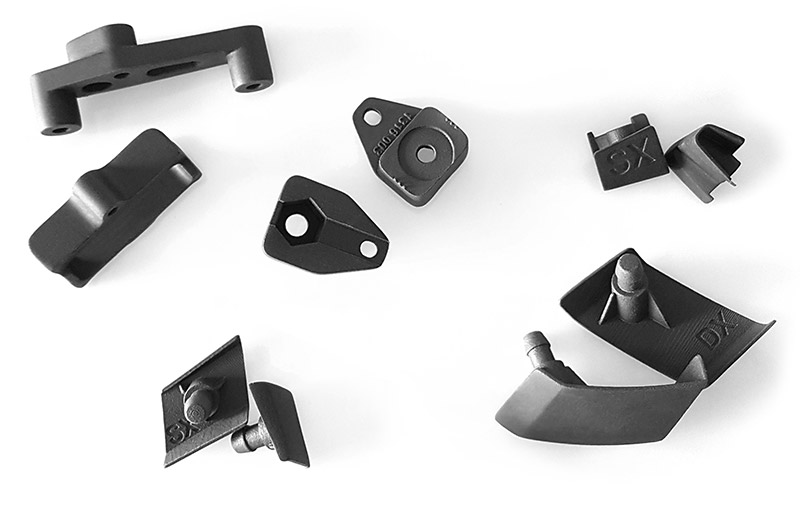
Technical specifications
Windform® P1 is the first material from P-LINE, the new born range dedicated to high speed production-grade 3D Printing technology.
It is a PA isotropic material with superior mechanical properties.
Windform® P1 has been engineered for a faster production of small and complex end-use parts with higher volumes at lower cost.
It is suitable for the manufacturing of components with detailed surface resolution.
Applications
The material is suitable for small 3D printed production components for the many industries. Just to indicate some examples of applications: Electrical (connectors, enclosures, housing for electronics); Consumer and household goods (packaging and design); Industrial products (interior fittings, furniture parts, mock-up); Medical (orthesis, soles); Automotive (interior design, ventilation flaps, steering wheel paddle shifters).
